The Vienna Game is a dynamic and flexible choice for White players who love to start a game with the King’s pawn opening (1. e4).
This opening is not very popular in the chess world, however, it is a very sound opening that can be an excellent choice for players who are looking to catch their opponents off-guard.
The Vienna also enjoys preference among the elite. Players like Indian grandmaster Viswanathan Anand have been known to employ it in their games.
The Vienna Game starts after 1. e4 e5 2. Nc3.
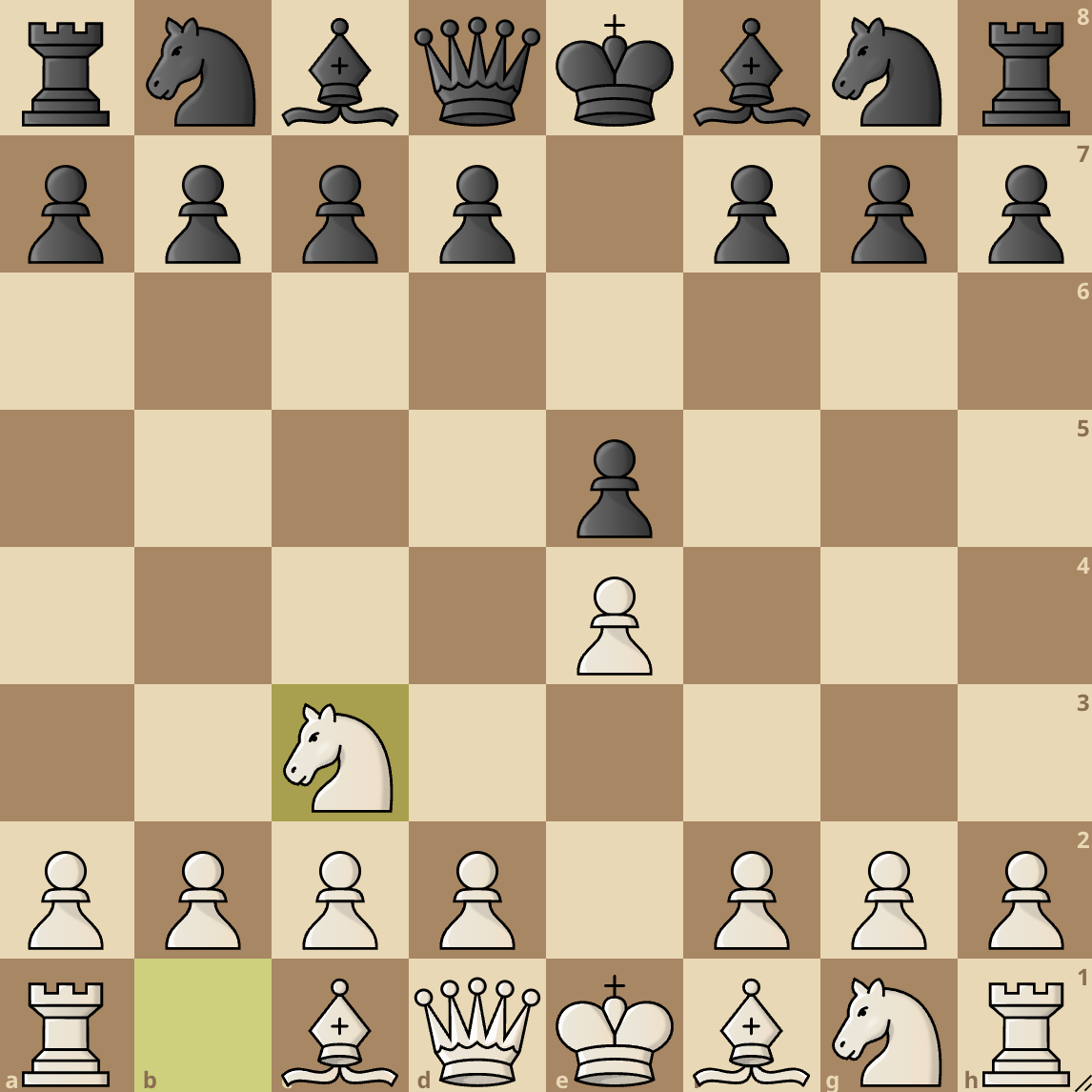
Nc3 is the move that signifies the start of the Vienna Game. In the normal King’s pawn opening game, White’s next move after e4 is usually Nf3.
However in the Vienna Game, White plays the unconventional 2. Nc3. Nc3 deviates from the norm and foils some popular replies Black has, for example the Petrov’s Defense.
The Vienna Game has been studied in depth over the years and many ways of handling the opening have been devised. The variations we will look at in this opening are:
- Falkbeer Variation
- Max Lange Defense
- Vienna Gambit
Falkbeer Variation
1. e4 e5 2. Nc3 Nf6
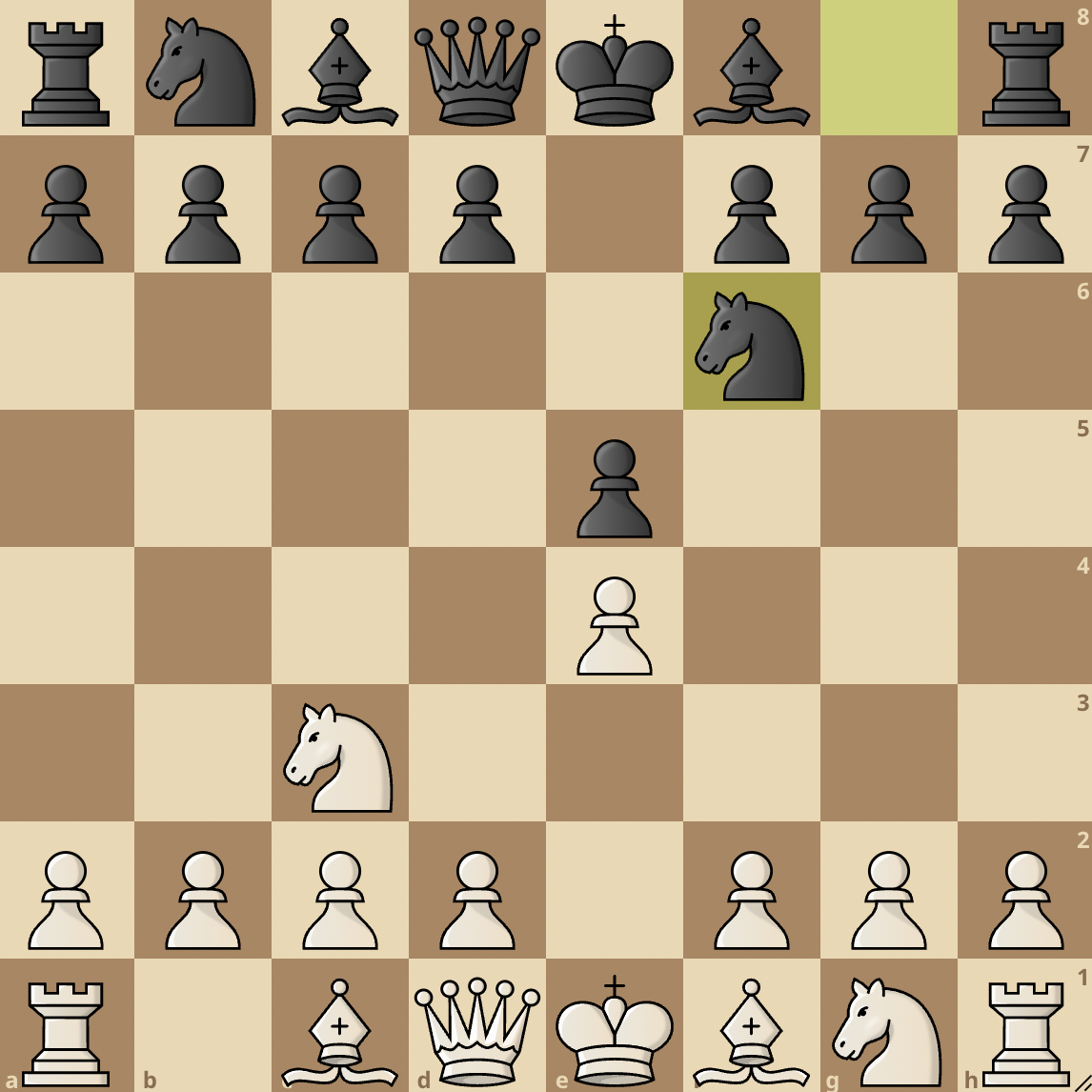
The Falkbeer Variation is the most popular variation of the Vienna Game. After Nc3, Black replies by developing a piece of their own with 2…Nf6.
White then continues with 3. g3, preparing to fianchetto their light-squared bishop and fight for control of the light-squared diagonal. g3 also enters into a sub-variation of the Falkbeer, the Mieses Variation.
After g3, Black sees that White is looking to dominate in the center, so they immediately strike with 3…d5. A trade of pawns happens in the center with 4. exd5 Nxd5 and White completes the kingside fianchetto with 5. Bg2. Black now exchanges knights with 5…Nxc3 and White recaptures with 6. bxc3.
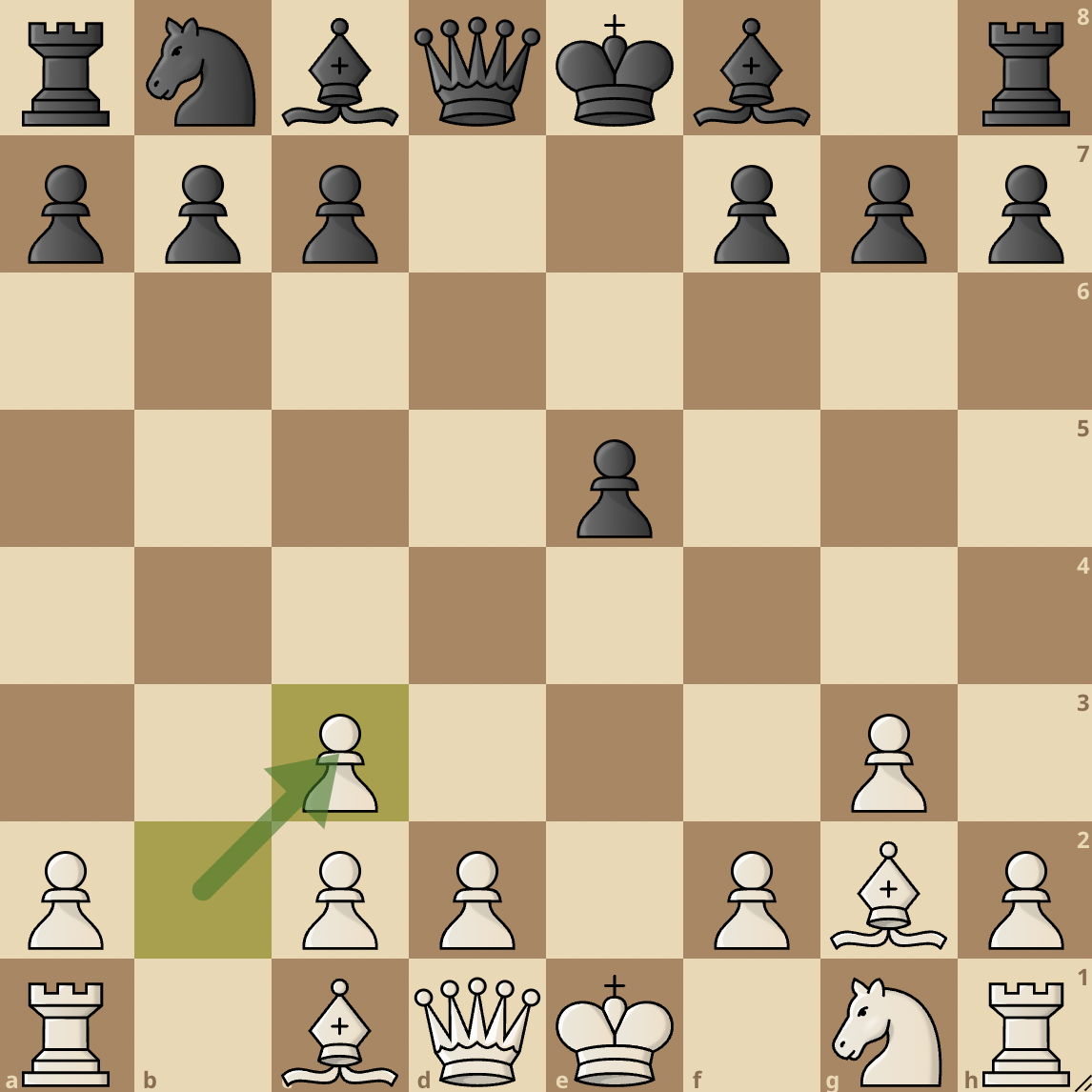
6. bxc3 is the best move in this position, as playing dxc3 would expose the White queen to capture by the Black queen and make White lose castling rights or fall in an inferior position.
6. bxc3 also gives White the opportunity to push d4 when the time is right. The game then continues with Black developing a piece with 6…Bd6 and preparing to castle.
White develops their knight with 7. Nf3 and Black castles with 7…0-0, White also castles with 8. 0-0.

From here, we can see that the game has the promise of developing into a very sharp attacking game. White has enough resources to start an attack on the queenside (they have the fianchettoed bishop and the b-file), while Black reserves the option of playing f5 and starting an attack on White’s kingside.
Max Lange Defense
1. e4 e5 2. Nc3 Nc6
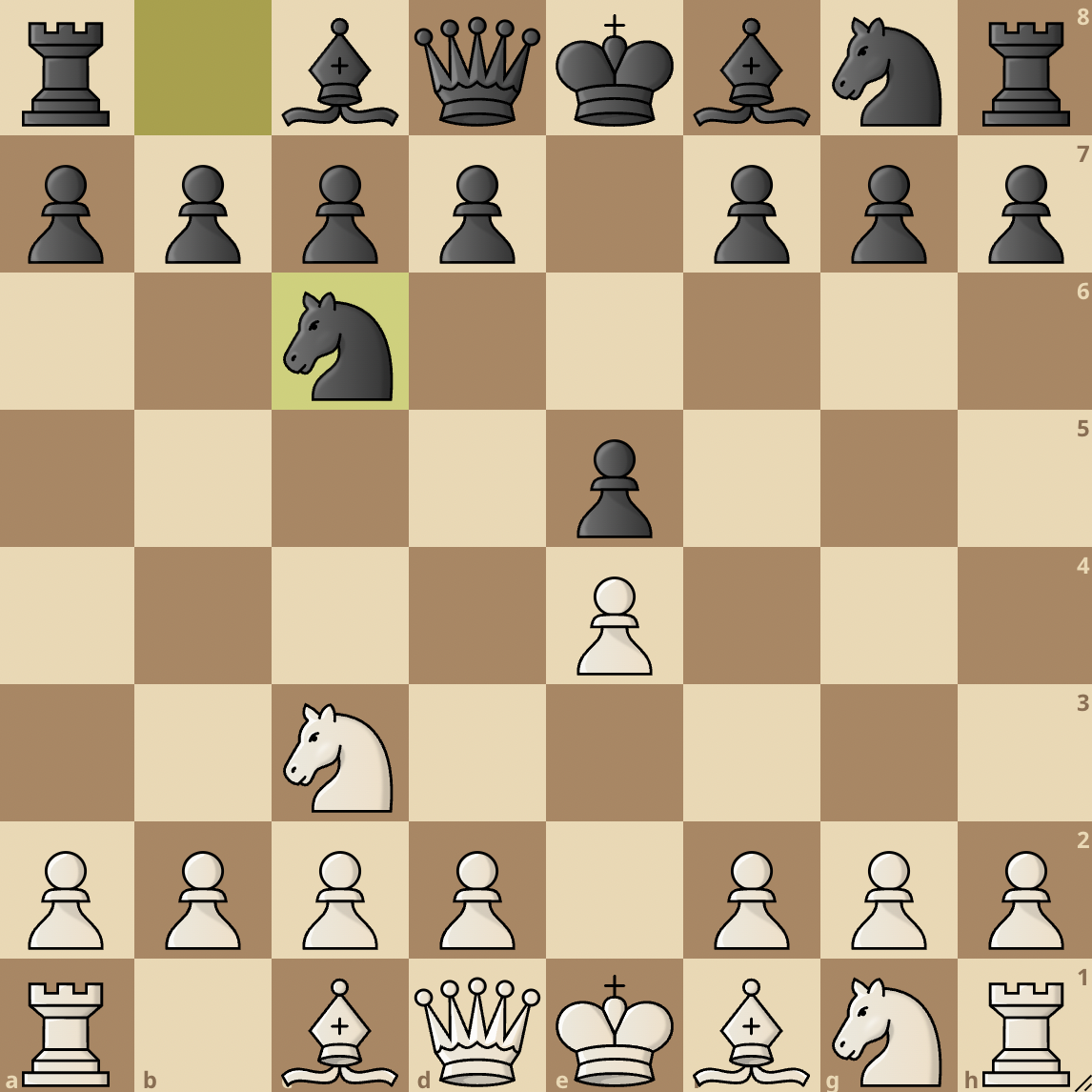
The Max Lange Defense is the second most played variation in the Vienna Game. It starts with the move 2…Nc6.
From here, the most played move for White is 3. Bc4.
White can also go for 3. Nf3, however, this move deviates from the Vienna Game and moves into the Three Knights Variation. Then the game continues calmly with both sides looking to develop their pieces to optimal squares.
However, if White continues with 3. Bc4, the game continues in the spirit of the Max Lange Defense. Black can either play the calm 3…Nf6 which again is another way of entering the Three Knights Variation or they can choose to play the less common 3…Bc5.
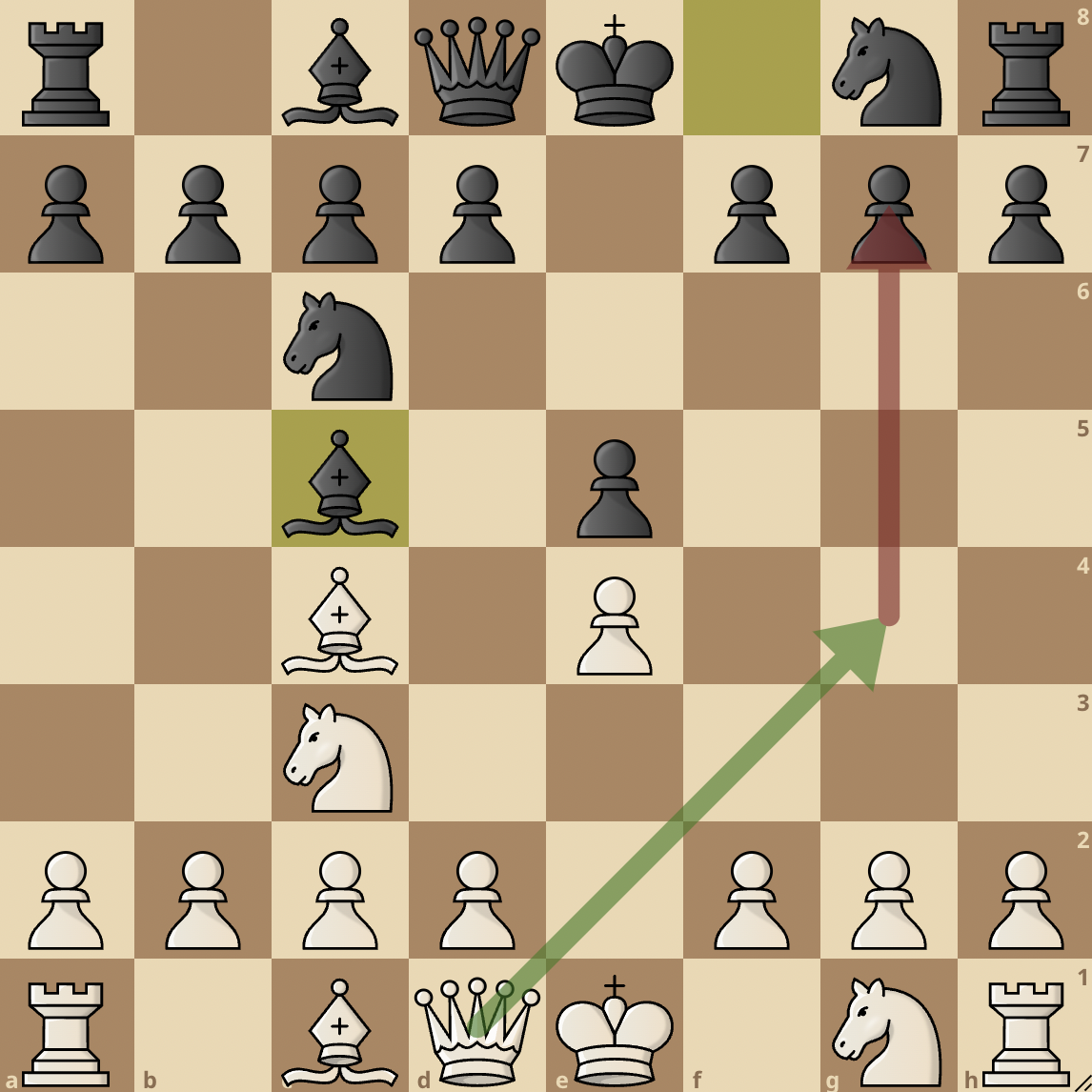
…Bc5 is known as the copycat variation as the position on the board is very symmetrical. However, in this variation, White can gain a slight advantage by playing 4. Qg4, and attacking the g7 pawn, Black will have to weaken their kingside by playing 4…g6. Other moves like ….Qf6 or ….Kf8 do not do much good.
If Black plays 4…Qf6, it looks like they are defending the g7 pawn and threatening White’s f2 pawn at the same time. However, White can gain a major advantage by playing 5. Nd5. This move comes with an attack on the Black queen and pretty much forces Black to play 5… Qxf2+.
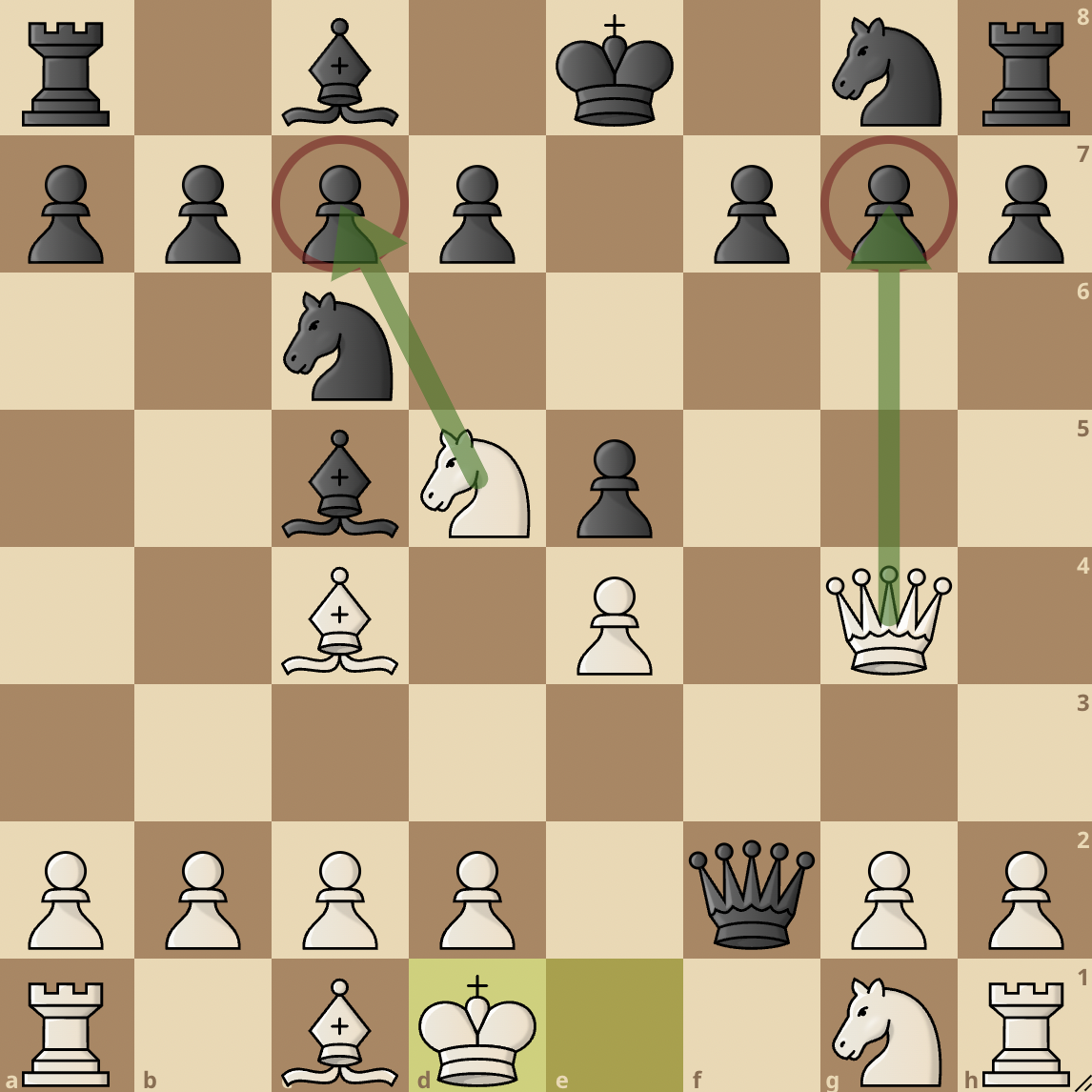
White then moves away from check with 6. Kd1 and here, we can see that Black is in some sort of trouble. They can’t checkmate the White king as the f1 square is protected by the light-squared bishop on c4.
White is threatening to play Nxc7+ to win the rook on a8, and the g7 pawn is also under attack. Black will have a very difficult time trying to parry all of White’s threats.
Vienna Gambit
. 1. e4 e5 2. Nc3 Nf6 3. f4
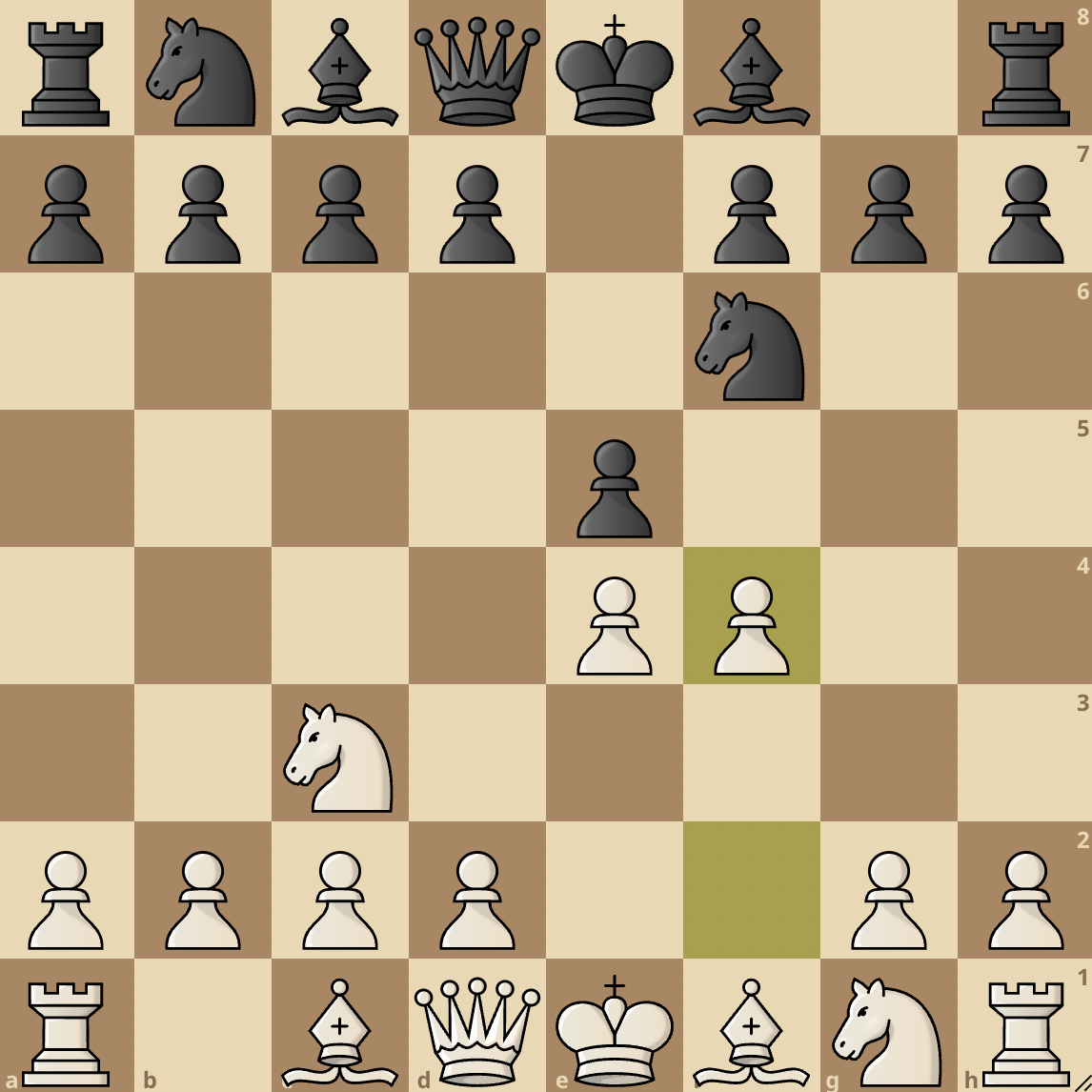
The Vienna Gambit is a variation in the Vienna Game where White tries to offer up the f-pawn in exchange for activity and center control.
The idea in this variation is similar to the King’s Gambit, however, it comes with lesser risk as Black cannot access the weakened e1-h4 diagonal with their queen due to the development of the f6 knight.
Accepting the gambit pawn is never a good idea for Black. This is because White gains a whole lot of activity in exchange for the pawn, they can also win back the pawn very easily and leave Black in a worse position.
For example, if Black continues with 3…exf4, White will push 4. e5 and threaten the f6 knight. The f6 knight has nowhere to go so Black has to take it all the way back to its starting square by playing 4. Ng8.
White then continues development with 5. Nf3. Another thing Nf3 does is protect the h4 square from any potential checks by the Black queen.

Black now challenges the e5 pawn with 5…d6 and White defends the pawn with 6. d4. Black captures with 6…dxe5 and White plays 7. Qe2, pinning the e5 pawn to the Black king. Black plays 7. Be7 to break the pin and now White captures the e5 pawn with 8. Qxe5.
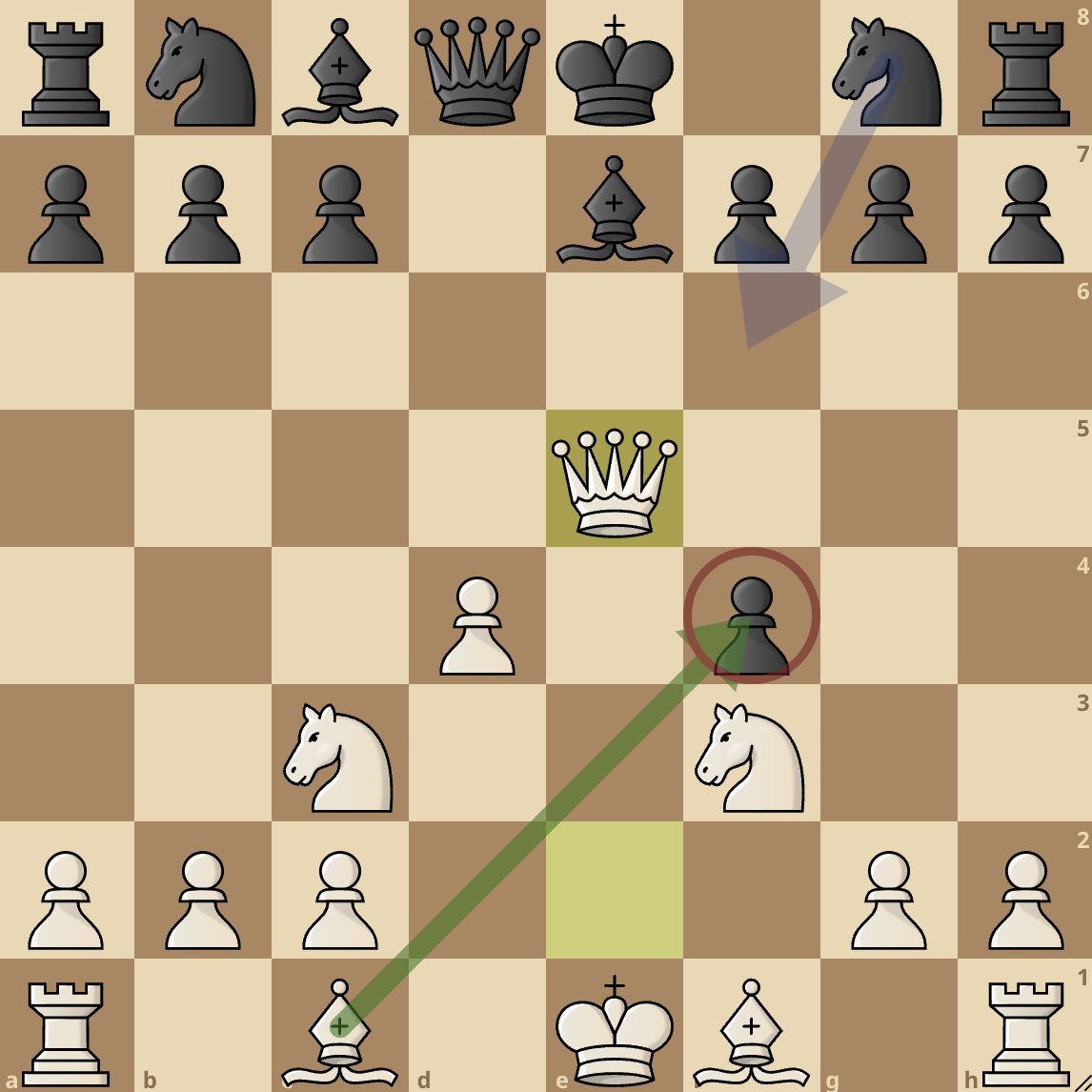
The f4 pawn will also fall very soon and White will have a superior position.
Now that we have seen that accepting the pawn is not the best move, what can Black do?
Well, the most popular move for Black here is to play 3…d5 and challenge the center.
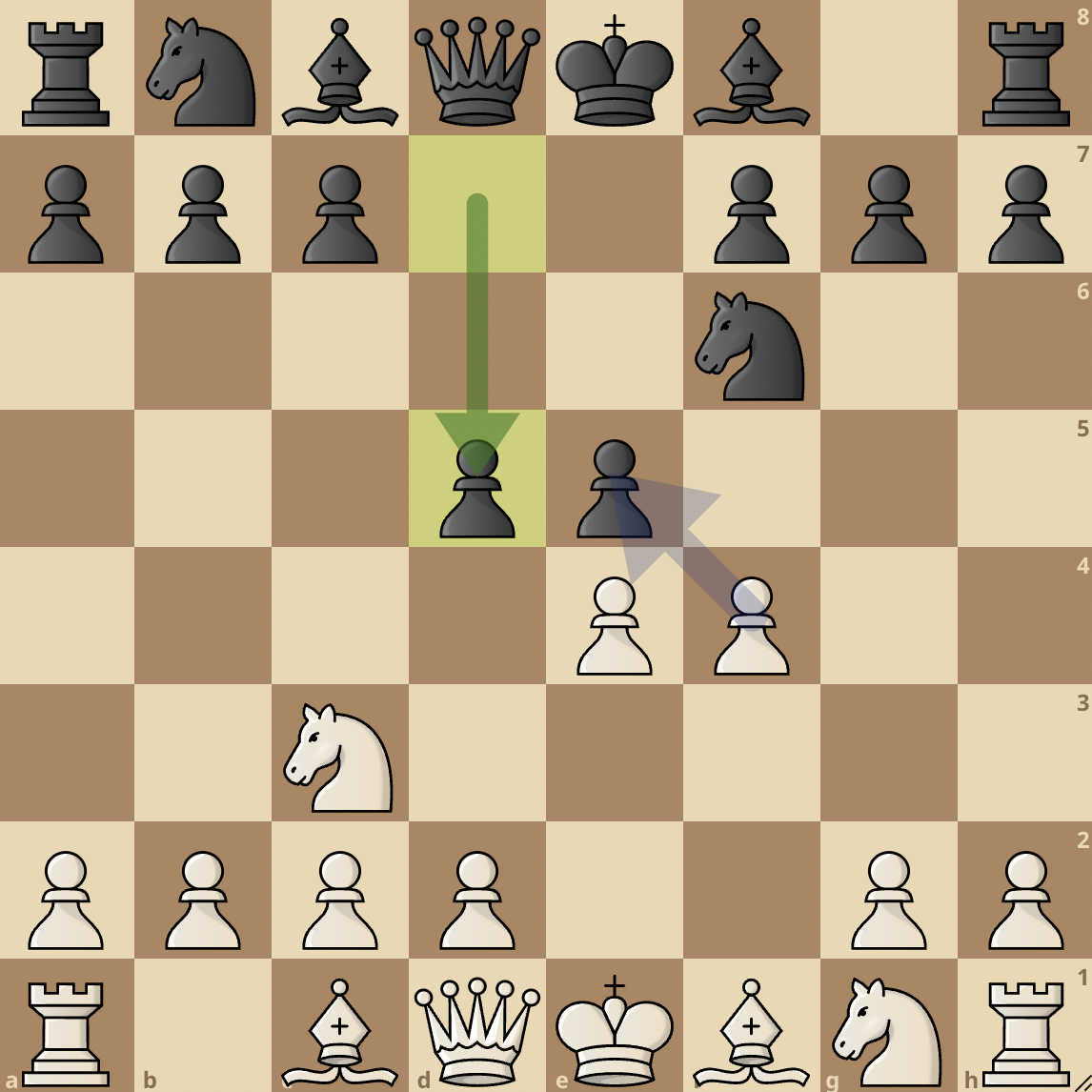
White then continues with 4. fxe5, attacking the f6 knight and Black plays 4…Nxe4. Capturing the e4 knight immediately is not a good move for White as, after Black recaptures with 5. Nxe4 dxe4, White cannot make use of the f3 square.
Therefore, 5. Nf3 is the most favored move in this position.

The game then continues with both sides trying to develop their pieces to the best squares possible and fighting for an advantage in the middlegame.
The Vienna Gambit is not a very common variation in top-level play, however, it can be utilized to great effect.
Successful Deployments
Touch the moves or move the board around for a better interactive experience.
Samsonov v Rashid Nezhmetdinov, Kazan-ch (1929)
The Vienna Game is a dynamic and interesting opening for White to employ, however, when it is played against an attack-minded player like Rashid Nezhmetdinov it has to be played with precise accuracy. In their 1929 game, Samsonov unfortunately did not play accurately and Rashid crushed the Vienna Game using the Black pieces in just 15 moves.
Wilhelm Steinitz v Vines, (1874)
This 1874 game by Steinitz and Vines is a good lesson on how White can play against the Vienna Gambit Declined. Enjoy!
Serafino Dubois v Baruch, Florence (1866)
This game is another nice lesson on how to play the Accepted variation of the Vienna Gambit. Go through it and we’re sure you’ll learn a thing or two.





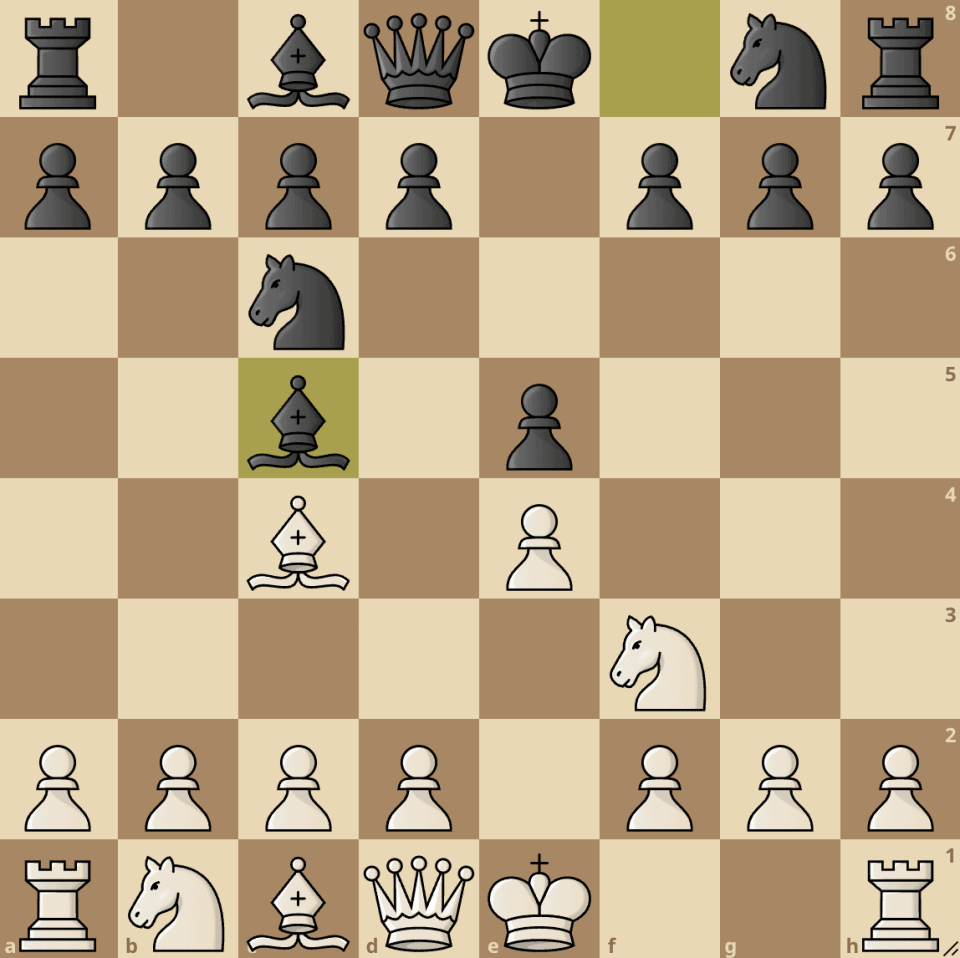

join the conversation